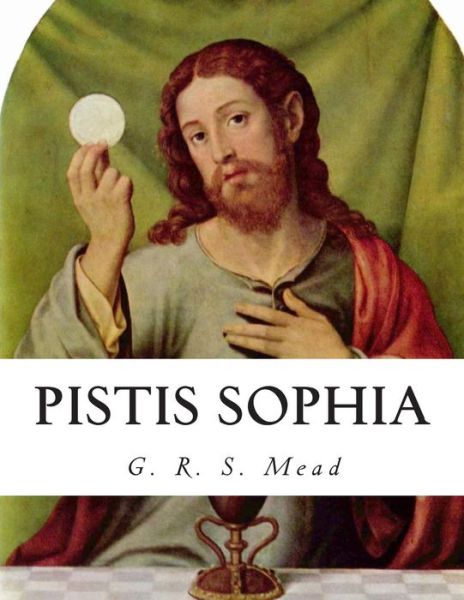
Tell your friends about this item:
Pistis Sophia
G R S Mead
Pistis Sophia
G R S Mead
Publisher Marketing: Pistis Sophia is an important Gnostic text discovered in 1773, possibly written between the 3rd and 4th centuries AD. The remaining manuscript, which scholars place in the late 4th century, relates the Gnostic teachings of the transfigured Jesus to the assembled disciples (including his mother Mary, Mary Magdalene, and Martha), when the risen Christ had accomplished eleven years speaking with his disciples. In it, the complex structures and hierarchies of heaven familiar in Gnostic teachings are revealed. The text proclaims that Jesus remained on earth after the resurrection for 11 years, and was able in this time to teach his disciples up to the first (i. e. beginner) level of the mystery. It starts with an allegory paralleling the death and resurrection of Jesus, and describing the descent and ascent of the soul. It then proceeds to describe important figures within the Gnostic cosmology, and then finally lists 32 carnal desires to overcome before salvation is possible. The female divinity of Gnosticism is Sophia, a being with many aspects and names. She is sometimes identified with the Holy Spirit itself but, according to her various capacities, is also the Universal Mother, the Mother of the Living or Resplendent Mother, the Power on High, She-of-the-left-hand (as opposed to Christ, understood as her husband and he of the Right Hand), as the Luxurious One, the Womb, the Virgin, the Wife of the Male, the Revealer of Perfect Mysteries, the Holy Dove of the Spirit, the Heavenly Mother, the Wandering One, or Elena (that is, Selene, the Moon). She was envisaged as the Psyche of the world and the female aspect of Logos. Contributor Bio: Mead, G R S G. R. S. Mead is regarded as a pioneer in the field of Gnostic and Hermetic studies. A highly intuitive scholar, Mead joined the company of Madame Blavatsky and her close associates. In this circle, he learned the profound mysteries of the Gnostics and became a translator of these writings. Mead evidently suffered some scholarly prejudice because of his connections with Theosophy. However, he also visited with C. G. Jung during his last years, and Jung thanked him for his dedicated work, his outstanding use of the English language, and for his affinity toward the experience of Gnosis.
| Media | Books Paperback Book (Book with soft cover and glued back) |
| Released | November 7, 2014 |
| ISBN13 | 9781503122482 |
| Publishers | Createspace |
| Genre | New Age Literature |
| Pages | 238 |
| Dimensions | 216 × 279 × 13 mm · 562 g |
More by G R S Mead
More from this series
See all of G R S Mead ( e.g. Paperback Book and Hardcover Book )

 Christmas presents can be returned until 31 January
Christmas presents can be returned until 31 January




![Cover for G R S Mead · Thrice-Greatest Hermes: Studies in Hellenistic Theosophy and Gnosis Volume III.- Excerpts and Fragments (Annotated) (Hardcover Book) [Large type / large print edition] (2021)](https://imusic.b-cdn.net/images/item/original/072/9782357288072.jpg?g-r-s-mead-2021-thrice-greatest-hermes-studies-in-hellenistic-theosophy-and-gnosis-volume-iii-excerpts-and-fragments-annotated-hardcover-book&class=scaled&v=1642219965)
![Cover for G R S Mead · Thrice-Greatest Hermes: Studies in Hellenistic Theosophy and Gnosis (3 books in One ) Volumes I-II-III (Annotated) (Paperback Book) [Annotated edition] (2021)](https://imusic.b-cdn.net/images/item/original/096/9782357288096.jpg?g-r-s-mead-2021-thrice-greatest-hermes-studies-in-hellenistic-theosophy-and-gnosis-3-books-in-one-volumes-i-ii-iii-annotated-paperback-book&class=scaled&v=1642375659)
![Cover for G R S Mead · Thrice-Greatest Hermes: Studies in Hellenistic Theosophy and Gnosis Volume II.- Sermons: Corpus Hermeticum - The Asclepius (Annotated) (Hardcover Book) [Large type / large print edition] (2021)](https://imusic.b-cdn.net/images/item/original/041/9782357288041.jpg?g-r-s-mead-2021-thrice-greatest-hermes-studies-in-hellenistic-theosophy-and-gnosis-volume-ii-sermons-corpus-hermeticum-the-asclepius-annotated-hardcover-book&class=scaled&v=1642291535)
![Cover for G R S Mead · Thrice-Greatest Hermes: Studies in Hellenistic Theosophy and Gnosis Volume I.-Prolegomena (Annotated) (Hardcover Book) [Large type / large print edition] (2021)](https://imusic.b-cdn.net/images/item/original/010/9782357288010.jpg?g-r-s-mead-2021-thrice-greatest-hermes-studies-in-hellenistic-theosophy-and-gnosis-volume-i-prolegomena-annotated-hardcover-book&class=scaled&v=1639766763)

![Cover for G R S Mead · The Hymns of Hermes : Echoes from the Gnosis (Easy to Read Layout) (Hardcover Book) [Large type / large print ed edition] (2021)](https://imusic.b-cdn.net/images/item/original/873/9791029911873.jpg?g-r-s-mead-2021-the-hymns-of-hermes-echoes-from-the-gnosis-easy-to-read-layout-hardcover-book&class=scaled&v=1668372504)
![Cover for G R S Mead · The Corpus Hermeticum: Initiation Into Hermetics, The Hermetica Of Hermes Trismegistus (Paperback Book) [Large type / large print edition] (2020)](https://imusic.b-cdn.net/images/item/original/019/9791029911019.jpg?g-r-s-mead-2020-the-corpus-hermeticum-initiation-into-hermetics-the-hermetica-of-hermes-trismegistus-paperback-book&class=scaled&v=1642662270)
![Cover for G R S Mead · The Corpus Hermeticum: Initiation Into Hermetics, The Hermetica Of Hermes Trismegistus (Hardcover Book) [Large type / large print edition] (2020)](https://imusic.b-cdn.net/images/item/original/026/9791029911026.jpg?g-r-s-mead-2020-the-corpus-hermeticum-initiation-into-hermetics-the-hermetica-of-hermes-trismegistus-hardcover-book&class=scaled&v=1640684532)

















![Cover for G R S Mead · Pistis Sophia: A Gnostic Gospel (Hardcover Book) [Annotated edition] (2017)](https://imusic.b-cdn.net/images/item/original/019/9781946774019.jpg?g-r-s-mead-2017-pistis-sophia-a-gnostic-gospel-hardcover-book&class=scaled&v=1639313844)







